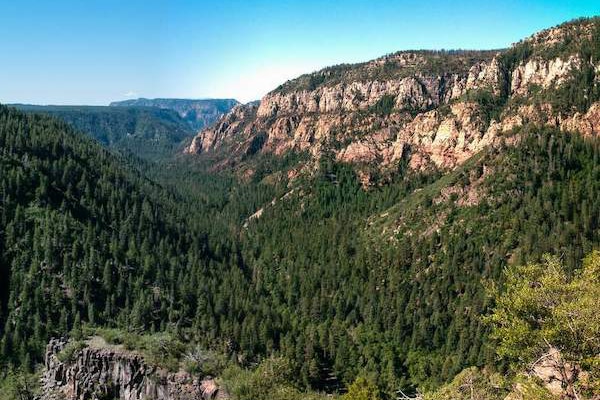
Bruno D’Amicis/Nature Picture Library/Science Photo Library
The global biodiversity crisis is one of the great threats to planetary health. Land-use change, over extraction of natural resources, climate change, pollution, and invasive species introductions have denuded natural systems to the point where around one million plant and animal species are threatened by extinction. Healthy and diverse ecosystems are vital in supporting human life and wellbeing through indirect ecosystem services like crop pollination, maintaining soil fertility, and sequestering carbon—and as a new report from the Intergovernmental Science-Policy Platform on Biodiversity and Ecosystem Services (IPBES) documents, the use of wild species directly supports the lives and livelihoods of billions of people worldwide.
The IPBES report estimates that humans rely on around 50 000 wild species to meet their health, economic, and cultural needs. More than 10 000 of these species directly support human nutrition. Wild tree species still provide most of the material for wooden products and they provide fuel wood for more than 2 billion people globally. More than 4 billion people use natural medicines as a large part of their healthcare, and wild species are an important source of drug discovery for modern medicines. Wild species are also integral to the lifeways and cultures of many indigenous groups.
Collapses in the populations of wild species would have a devastating direct impact on humanity’s ability to survive and thrive; not least for the 3·5 billion people living in rural parts of lower and middle-income countries who rely on wild species to meet their daily nutritional and economic needs. Securing systems for the sustainable use of wild species will therefore be especially important to the future wellbeing and lifeways of the world’s most vulnerable populations. Indeed, the IPBES report suggests that the sustainable use of wild species could contribute substantially to achieving each of the 17 Sustainable Development Goals; most notably the no poverty and zero hunger goals. However, multifaceted pressures threaten the viability of many wild species.
The global demand and trade of wild species has increased considerably over the last four decades—including illegal trade worth an estimated $69–199 billion annually. Around 30% of threatened and near-threatened species are unsustainably harvested. A warming climate will shift and shrink species’ habitat ranges, disrupt life cycles, and decrease populations through resource pressures and weather extremes. Future pursuit of economic growth and technological advances could drive up human consumption of wild species. These forces will lessen the resilience of species and ecosystems and reduce their ability to recover from over exploitation.
There have been some successes in sustainably managing wild species. Robust management practices mean that 66% of wild marine fish stocks are sustainably fished and populations have rebounded. About a quarter of the global land area, including 40% of conserved lands, are used by indigenous peoples. Indigenous managed lands have generally seen lower levels of deforestation and biodiversity decline. These positive examples hint at the ways that biodiversity policy needs to change going forward. Our failure to meet existing biodiversity goals, like the
Aichi Biodiversity Targets, shows that setting bold targets without agreeing the means or how to measure outcomes is insufficient. Successful strategies must combine local solutions and autonomy, informed by local and indigenous knowledge, with robust multinational regulation, strong institutions, and reliable mechanisms to measure progress.
The release of this IPBES report comes at an important time ahead of the next United Nations Conference of the Parties to the Convention on Biological Diversity meeting—which is to happen in late 2022 and aims to agree a new global biodiversity framework for the next decade. Achieving sustainable use across wild species is a difficult challenge that will require step changes in economic and cultural thinking. What the IPBES assessment offers to future framework setting is a way to quantify the social, economic, and cultural values of nature and biodiversity. A planetary health perspective can contribute to this full accounting of the value of nature, by evidencing sustainable biodiversity management as a pathway to human health and equitable futures. By affirming the full contribution of nature to human wellbeing, and the right of wild species to thrive alongside us, we can avoid irrevocable losses to the richness of life.


